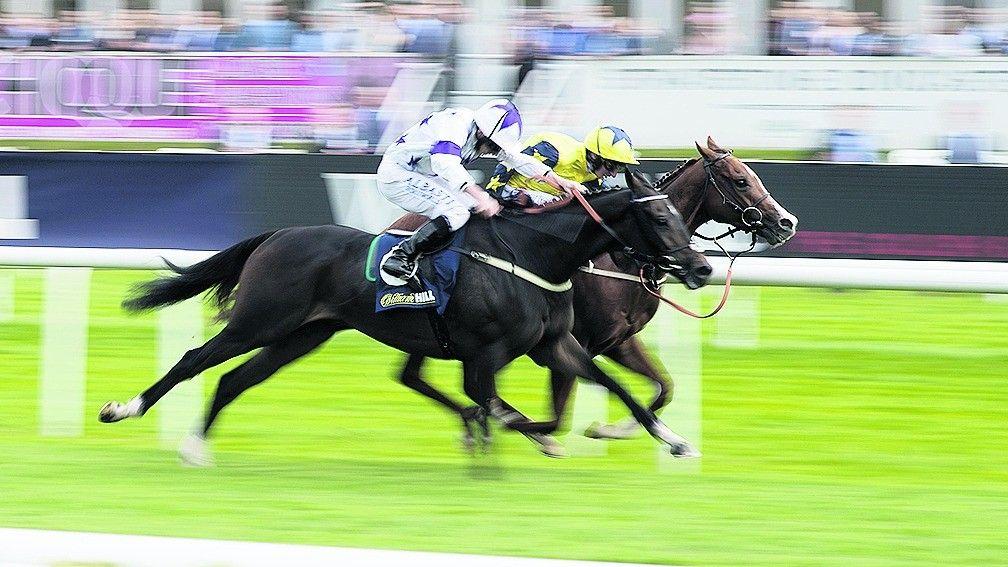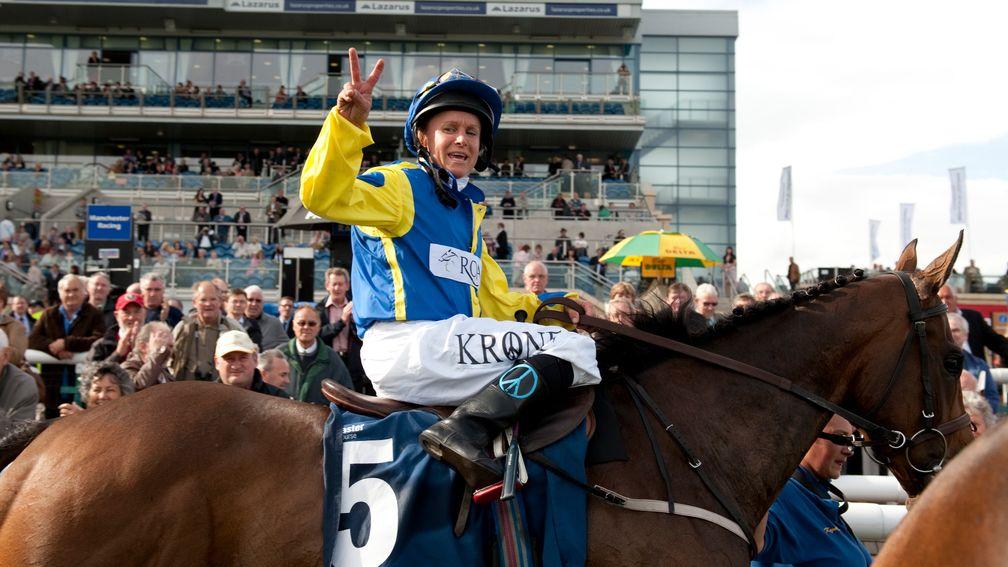Mottershead: Beckett right about inadequate prize-money
Three of the Racing Post's team at Doncaster reflect on a St Leger meeting that generated plenty of food for thought . . .
Despite having just trained the winner of the Park Hill Stakes, Ralph Beckett was not a completely happy man. His reasoning was persuasive.
The Park Hill won by Alyssa offered prize-money of £90,000. That is far from an inconsiderable sum but by modern Group 2 standards it is not colossal. Across the meeting as a whole that same point would have been equally applicable.
Doncaster's problem is, in part, that its signature fixture follows hot on the heels of local neighbour York's Ebor meeting, where cash rewards are hugely generous and seem to grow every year, as has been the case with Glorious Goodwood. That could not be said of Doncaster.
The Park Hill was one of three non-juvenile Group 2s held on Town Moor, with the Doncaster Cup and Park Stakes both valued at £100,000. However, York's top stayers' prize, the Lonsdale Cup, was worth twice as much at £200,000, while the City of York Stakes, like the Park a seven-furlong feature but one tier lower at Group 3 level, was worth £175,000.
Doncaster's top juvenile Pattern event in monetary terms was the Group 2 Champagne Stakes at £75,000. York's Group 3 Acomb Stakes, staged over the same distance, was run for £90,000.
Yet perhaps the biggest discrepancy, and the most disappointing numbers, were to be found in the handicaps.

That the William Hill Portland, traditionally one of the season's most prestigious and famous sprint handicaps, had a value of only £60,000 – way below the amount at a which the 'heritage' handle can be applied – is most regrettable. Furthermore, the race was more valuable ten years ago, as was the once mightier Mallard Handicap, which this week had a purse of just £40,000.
Contrast those figures again with the Ebor meeting, at which every one of the 11 handicaps (and indeed every single race), had prize-money of £70,000 upwards. As such, the nursery, apprentices' handicap and even the meeting's maiden were worth more than the poor old Portland.
Arena Racing Company, which manages Doncaster, has, to its credit, responded positively to big-race prize-money criticism in the past, significantly raising the value of the Coral Welsh Grand National when a boost was badly needed.
Similar action is now required at Doncaster.
Lee Mottershead
Time to spread the word
St Leger week is a huge event in South Yorkshire, much bigger than a mere racing festival.
You just have to look at the huge crowds of people enjoying themselves at the funfair well after the last race has been run to know that.
It's been a highlight in these parts almost since the first Doncaster Cup was run in 1766, with countless associated traditions – the first child born in the town on Leger day still gets lifetime membership of the racecourse.

Victory is nearly as prized here by local trainers as it is at York's Ebor meeting – witness the delight of such as Karl Burke, Tim Easterby and Paul Midgley in the winner's enclosure.
It's still an important destination for top trainers elsewhere in Britain, as success for the likes of Sir Michael Stoute, Roger Varian and Clive Cox illustrates.
Yet could more missionary work be done to spread the word further afield? Rather as at York last month, there was a touch of the Brexits about the four days.
Aidan O'Brien got on the scoresheet at a meeting that he has always supported strongly but bar him – and Willie Mullins' Doncaster Cup second Thomas Hobson – the overseas challenge was otherwise disappointingly thin.
This should be an easy sell. The big, galloping Town Moor circuit is among the fairest tracks in Europe, if not the world, and even in a wettish week like this the resilient surface bounced back to something not far removed from good ground.
Where are the Toulons, Son Of Loves and Crows of our youth?
An international flavour also adds an extra soupcon to the Leger Legends race, which is a tremendous addition to the programme and raises thousands for a worthy cause.
Julie Krone made a splash when coming across to win it in 2011 and another challenger from across the Atlantic – or even across the Channel – would add an extra dimension to a highly successful event.

David Carr
Fare feels thinly spread
More does not always mean better and Doncaster is going to have to think about the structure of the St Leger meeting, which feels a little too thinly stretched.
For a Classic meeting where there are plenty of top-class races, the opening day feels quiet and ordinary. The only buzz was created by the Leger Legends race, during which plenty of people suddenly appeared and there was genuine excitement. That was good. That was fun.
But apart from that there was little to get the pulse racing and plenty on the course were of the opinion it was a day that was not needed. It is a shame people feel that way when coming racing, especially to something that should be as good as the St Leger meeting.
The field sizes have not been tremendous this week either, particularly for the handicaps.
Yes, Doncaster was unlucky, with the weather putting many people off (the ground was not too bad – credit to Roderick Duncan and his team for that) but fields of six, four, six, seven, seven, six and six for some of the handicaps is not good.
Sweeping away, or altering, some of the contests to produce bigger and better fields should be considered. Moving the Leger Legends race and the Scarbrough Stakes to sit on one of the other three days certainly would not make them less significant.
As an aside, what was particularly good to see at Doncaster this week was the engagement the jockeys had with the general public. The likes of Frankie Dettori, Andrea Atzeni and James Doyle posed for photos, signed autographs and acknowledged the crowd on their walks between the weighing room and the paddock.
Their willingness to join in with racegoers, without it appearing to cause any aggravation, will have cheered those people up no end and is a positive image racing should continue to push.
Peter Scargill
Published on 17 September 2017inNews
Last updated 17:22, 17 September 2017
- The latest edition of the Racing Post is available to read online now - here's how you can access it
- How Smart View recorded a 76 per cent profit at the Cheltenham Festival
- Smart View is available on the Racing Post app - how to read the revolutionary new racecard
- Levy reform talks 'accelerating' as clock ticks down to April deadline for agreement
- Kieran Shoemark lands another plum Meydan ride for Gosden stable on Trawlerman in Saturday's Dubai Gold Cup
- The latest edition of the Racing Post is available to read online now - here's how you can access it
- How Smart View recorded a 76 per cent profit at the Cheltenham Festival
- Smart View is available on the Racing Post app - how to read the revolutionary new racecard
- Levy reform talks 'accelerating' as clock ticks down to April deadline for agreement
- Kieran Shoemark lands another plum Meydan ride for Gosden stable on Trawlerman in Saturday's Dubai Gold Cup